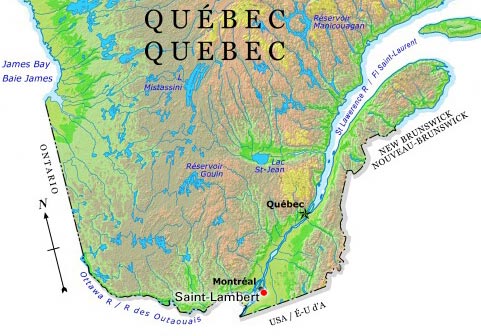Longueuil, Quebec, population 239,700 (2016 census), 231,409 (2011 census). Longueuil’s history dates to the 17th century with the settling of French colonists. It is today an important suburb of Montreal and is connected to the island of Montreal by the Jacques Cartier bridge and the Louis-Hippolyte-La Fontaine tunnel-bridge. Longueuil is criss-crossed by major expressways linking metropolitan Montreal to Québec city, the Eastern Townships and northern New York State. The municipality of Longueuil is its own entity within the Longueuil agglomeration which includes other nearby cities.
Longueuil is situated on the ancestral territory of the Kanyen’kehà:ka. The land remains unceded and is considered Indigenous territory.
Settlement and Development
In 1657, Charles Le Moyne de Longueuil et de Châteauguay of Ville-Marie — modern day Montreal — was granted an area of land along the St Lawrence River. He named it Longueuil, in honour of his mother's village in France.
In 1845, the municipality of the parish of Saint-Antoine de Longueuil was created. Three years later, the village of Longueuil was separated from the rural parish and incorporated as a distinct municipality; it became a town in 1874 and a city in 1920. The 1960s saw a period of growth through the annexation of Montréal-Sud (1961) and the merger with the city of Jacques-Cartier (1969).
Given its historical significance, the name Longueuil was chosen to designate the new city that in 2002 amalgamated Longueuil with Boucherville, Brossard, Saint-Hubert, Saint-Lambert, Saint-Bruno-de-Montarville, Greenfield Park and LeMoyne.
Cityscape
The new city is predominantly a large suburban residential area where most houses have been built in the second half of the 20th century, although it treasures some older historical districts. For instance, the historical sector of Vieux-Longueuil was designated a heritage site by the municipality in 1993 and contains over 450 buildings built before 1945, including the remarkable St Mark's Anglican church (1842)

Finished in 1887, the co-cathedral is recognized as a historic monument and holds many important historical and religious items.

 Share on Facebook
Share on Facebook Share on X
Share on X Share by Email
Share by Email Share on Google Classroom
Share on Google Classroom


